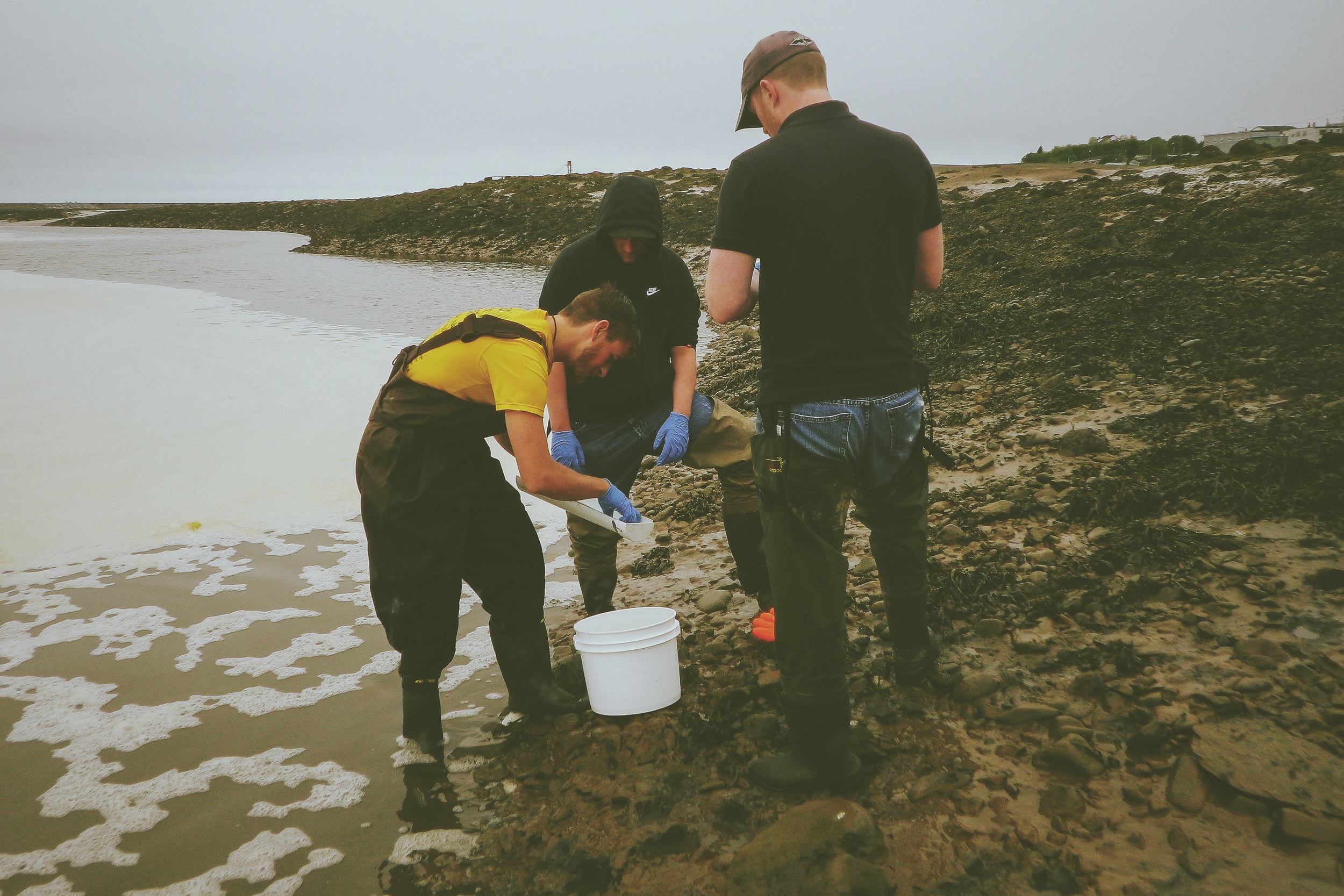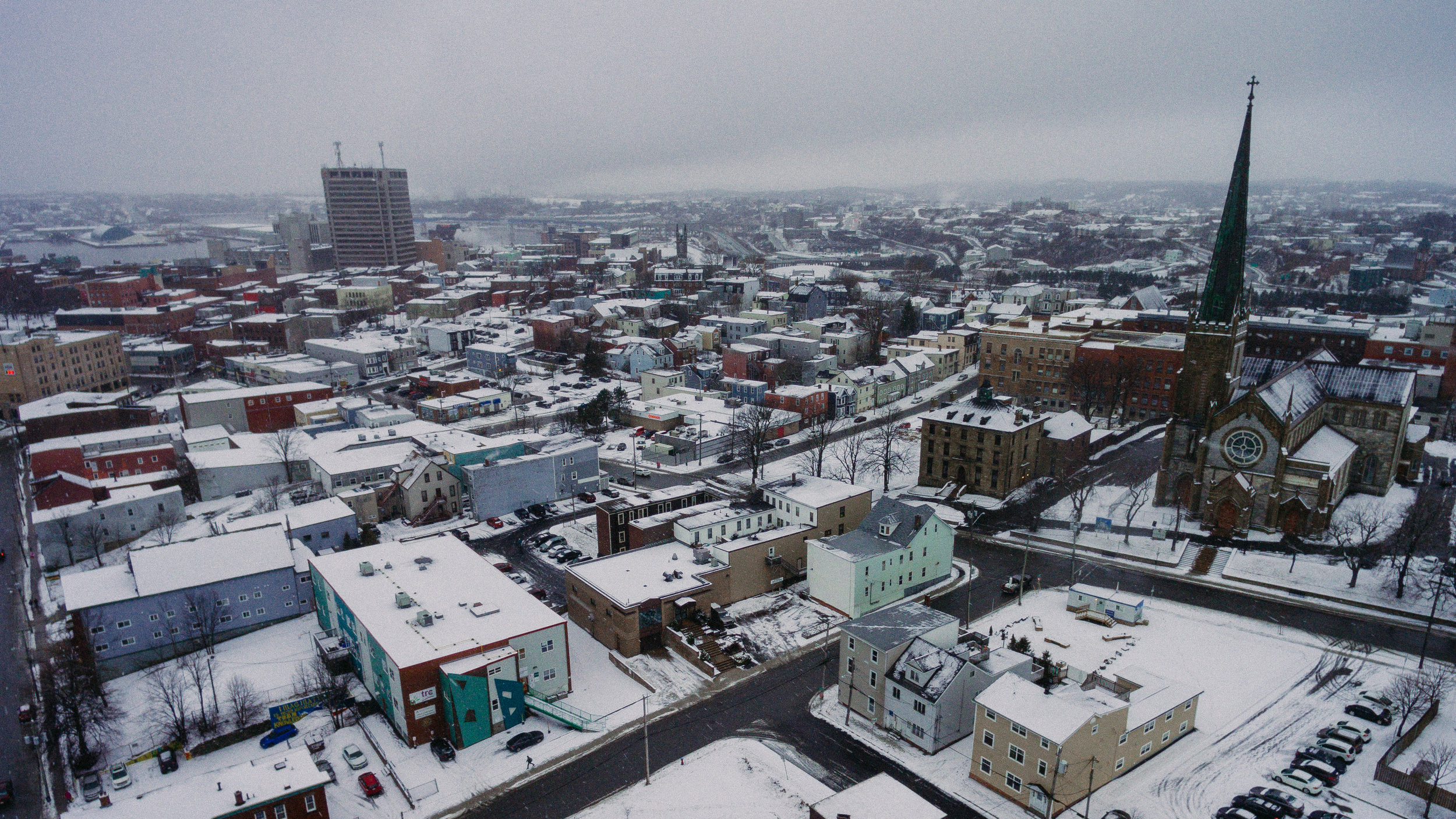
STAFF BLOG
Schools, Climate and Our Changing Province
“The role of the provincial government is critically important. It must provide the leadership and model the behaviour and actions needed to ensure sustained and ambitious actions to address the challenges and opportunities presented by climate change.” (New Brunswick Climate Change Action Plan, 2016)
Current discussions between communities and the Anglophone South District Education Council regarding school closures in Saint John have yet to consider climate change as a significant factor in the upcoming decisionmaking on neighbourhood schools. Our ability as a City, and as communities, to mitigate the impacts of climate change and adapt into the future is intrinsically tied to our schools which act as community hubs not only for education but also for capacity building and community resilience.
In late 2016, the Government of New Brunswick released its Climate Change Action Plan which is “supported by actions to build resilience into our communities, businesses, infrastructure and natural resources.” (p. 4) The following actions from the New Brunswick Climate Change Action Plan directly relate to the placement or site selection of schools in New Brunswick:
Action #18: In urban areas, and where possible elsewhere, preferentially locate public buildings in areas accessible by public transit, walking and cycling (p. 7)
Action #25: Engage with municipalities and regional service commissions to encourage actions at the community planning and local development stages that include strategies for climate change mitigation and adaptation, smart growth and brownfield and infill development (p. 8)
Action #50: Collaborate with municipal and local governments to expand cleaner alternative transportation options such as electric vehicles, public transit, carpooling, ride-sharing, bicycling and walking (p. 13)
Action #62: Encourage community and regional land-use planning practices that incorporate energy efficiency, energy conservation, carbon sequestration, reduced emissions, support healthy built environments and which incorporate and encourage communities to improve the availability and accessibility of safe alternative forms of transportation such as walking, cycling and public transit (p. 15)
Action #63: Provide incentives to promote smart growth (natural infrastructure, green buildings, low-impact developments) and sustainable community design. (p.15)
These action items give the province a unique opportunity to take leadership on climate change by ensuring that schools remain in neighbourhoods wherein children already walk or cycle to school, limiting their family’s dependence on automobiles and fostering a sense of community in our youngest citizens as they interact daily with their community and surrounding environment. Lifestyle behaviours learned by children, including using sustainable modes of transportation, will influence future behaviour as these younger generations deal with increasing impacts from climate change.
According to the U.S. Environmental Protection Agency and the Council of Educational Facility Planners International, schools profoundly affect the communities they serve and should follow smart growth principles; they should always be placed within walking distance of residents and neighbourhood services to reduce traffic congestion, support existing communities and facilities, reduce pollution, and preserve open space.
Action #33(c): Expanded capacity and programs to support low-income New Brunswickers (p. 11)
The schools proposed to be closed are located in priority neighbourhoods of Saint John where there are high concentrations of low-income families. Climate change impacts and extreme weather events disproportionately affect low-income households due to a lack of resources and services to deal with impacts. Schools can provide information, shelter, and community support for socially vulnerable people in dealing with extreme weather events. Furthermore, closure of schools within walking distance for students disproportionately affects families who cannot or choose not to rely on driving a vehicle. Schools that offer more transportation choices have been shown to reduce the amount of land that is paved, reduce automobile and bus traffic, allowing for reductions in air pollution while also promoting increased active transportation use.
In addition, the potential relocation of a school to the fringes of a community can contribute to outward migration from its core, which can cause disinvestment in existing neighbourhoods and contribute to generational poverty cycles and widening gaps in its capacity for adaptation and mobility. School siting policies that discourage renovation or expansion of existing schools and favor building larger new schools can induce traffic congestion, increase fossil fuel emissions and consumption, reduce the proportion of students walking and biking to school, and contribute to disinvestment in existing neighborhoods. This disinvestment further contributes to the physical, social and economic decline seen in many neighborhoods where a large percentage of low-income, minority or traditionally marginalized populations live.
While the decisions faced by the Anglophone South District Education Council are by no means straightforward, and require careful consideration across our communities, it is important to understand and acknowledge the ramifications of school site selections on climate adaptation, the health of our environment and our city’s success in driving sustainable urban growth. The short term costs of maintaining critical infrastructure such as schools in existing urban neighbourhoods can be part of a long-term community revitalization effort and serve as an impetus for broader revitalization efforts. Our community’s future is directly tied to our success adapting to the challenges posed by global climate change, and while no single action will make or break that future, we must work together to consider our collective impact and the role we each play in making Saint John a champion of resiliency and smart growth.
References
Ad-Hoc Coalition for Healthy School Siting, “Revising CDE School Siting Policy Documents: How California’s School Siting Policies Can Support a World-Class Educational System,” Submitted to the California Department of Education by the Ad-Hoc Coalition for Healthy School Siting (2008). Retreived from: http://citiesandschools.berkeley.edu/reports/School_Siting_Policy_Brie f_013108.pdf
Government of New Brunswick (2016). "Transitioning to a Low Carbon Economy: New Brunswick’s Climate Change Action Plan." Retrieved from: http://www2.gnb.ca/content/dam/gnb/Departments/env/pdf/Climate-Climatiques/TransitioningToALowCarbonEconomy.pdf
Lawrence Frank and Company, Inc., “Youth Travel to School: Community Design Relationships with Mode Choice, Vehicle Emissions, and Healthy Body Weight,” Prepared for U.S. Environmental Protection Agency, Washington, DC, December 2008. Retrieved from: http://www.epa.gov/smartgrowth/pdf/youth_travel.pdf
United States Environmental Protection Agency and the Council of Educational Facility Planners International (2004). "Schools for Successful Communities: An Element of Smart Growth." Retrieved from: https://www.epa.gov/smartgrowth/schools-successful-communities-element-smart-growth
United States Environmental Protection Agency (2003). "Travel and Environmental Implications of School Siting." Retrieved from: https://www.epa.gov/sites/production/files/2014-04/documents/school_travel.pdf
United States Environmental Protection Agency (2011). "School Siting Guidelines." Retrieved from: https://www.epa.gov/sites/production/files/2015-06/documents/school_siting_guidelines-2.pdf
A Sacred Place
I remember the first time I went to Tin Can Beach. It was during the winter and snow covered the ground. Paths in the snow led to the water and indicted that other people had been coming to the area. It was calm and beautiful to sit and look across the harbour. I am a new resident to the City. I remember the excitement I had about my discovery that such a place existed on the peninsula. Here is a natural area with access to the water!
The first person I told about my new discovery was clearly not as excited as I was. I was told that Tin Can Beach is dangerous – a place to be avoided. Since then I have heard many stories about Tin Can Beach. For the most part I've heard that it is a hidden gem and a place with great potential. I also hear the story of it being dangerous and neglected.
I can’t help but wonder how these stories shape the way we use and interact with this place. Collectively, how do these stories form the environment of Tin Can Beach. If we treat this place as somewhere to be avoided it may become the dangerous area that some fear it is – it will remain dark at night, people may stop going there, we may even abandon the area. I am optimistic though. I have a feeling that more people are telling the story of Tin Can Beach’s potential. This is the story I like most! It encourages us to be stewards in our community and to recognize Tin Can Beach as an asset and a sacred place. This place is a unique asset for the community! It is a natural coastal setting in an urban environment. We have a chance to shape this place to be what we want, both physically and in the stories that we share.
I believe that Tin Can Beach is a sacred place for many people in our community. Randolph Hester describes sacred places in his book Design for Ecological Democracy as places where community members feel connected to their personal and cultural identity. Sacred places are often hidden gems - they may not be recognized by an outsider. A sacred place can be a historic building or district, or it can be as small as a neighbourhood swing that holds special memories for the youth of an area. By recognizing sacred places we are invited to discuss the qualities of our community that make life truly worth living. City design is often dominated by functional and economic debates and the sacredness of a place can be overlooked. In recognizing Tin Can Beach as a sacred place, we can apply the concepts of ecological democracy that Hester describes.
Ecological democracy emphasizes direct, hands on involvement by the people. “Actions are guided by understanding natural processes and social relationships within our locality and the larger environmental context.” Hester argues that the surrounding community and people who frequent a place know it best and should be involved in the design process. There should be a feeling of collective ownership over sacred places. He describes how North American cities have been in a cycle where “insecure and unrooted individuals make insecure and unrooted cities, which make even more insecure and unrooted individuals, [this] was generations in the making and will be generations in the undoing. Shifts that disrupt the unhealthy cycle are essential. This is the great challenge of our time.”
I see shifts happening in Saint John.
Here is another opportunity to shift the cycle. Community members have already stepped into the stewardship role at Tin Can Beach with tree planting and beach cleanups. I hope that through the process of enhancing the area we can shift the collective story of Tin Can Beach to the story of its sacredness for everyone.
Hester’s book is what inspired me to study community design and I am thrilled to be a part of a project that aligns with his teachings at Tin Can Beach.

